To welcome the upcoming 9th Asian Winter Games, the host city of Harbin has been adorned with decorative elements that embody profound Chinese culture, the dynamics of winter sports and the gala event's theme.
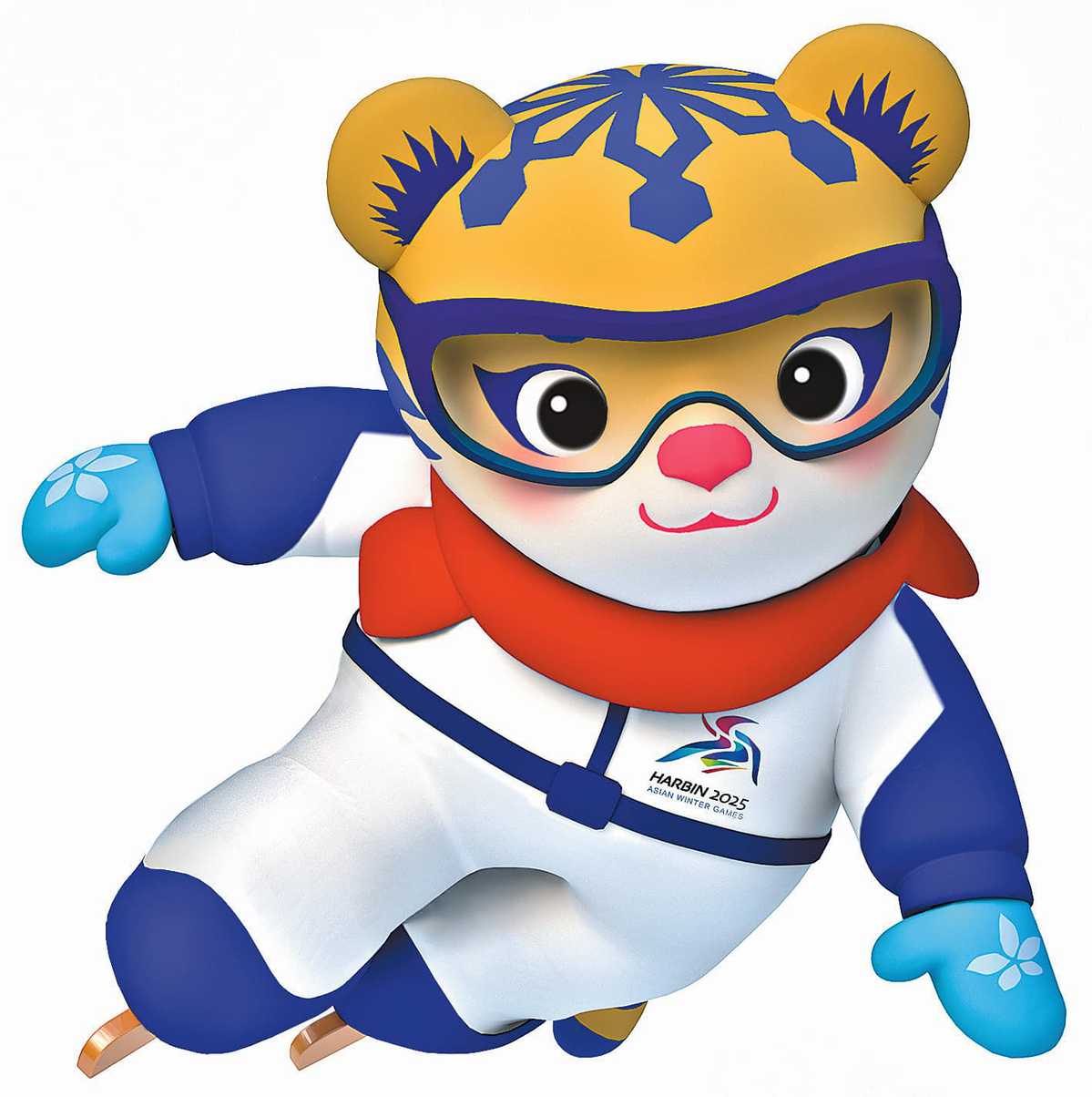
Games mascot Binbin represents the ice events. The mascot's features are inspired by cloth tiger toy designs and traditional paper-cutting. PROVIDED TO CHINA DAILY
Mascots
The mascots of the 9th Asian Winter Games — Siberian tigers "Binbin" and "Nini" — symbolize an in-depth exploration and shaping of the unique natural and cultural heritage of the country's Northeast: Siberian tiger culture.
"The archetypes of Binbin and Nini are two cute little Siberian tigers born in September 2023 at the Siberian Tiger Park in Harbin," said Zhang Qixiang, vice-governor of Heilongjiang province.

Games mascot Binbin represents the ice events. The mascot's features are inspired by cloth tiger toy designs and traditional paper-cutting. PROVIDED TO CHINA DAILY
"We pondered what kind of mascots could encapsulate the rich history and contemporary flair of Harbin, along with the warmth, honesty and romance of its people. We then considered the Siberian tiger, with its three-million-year evolution. A symbol of nature's harmony in Heilongjiang, it embodies both power and playful charm," explained the chief designer Chen Lei, who is also head of the department of visual communication design at the Academy of Arts and Design at Tsinghua University.
In Chinese culture, the tiger symbolizes good luck, and embodies qualities such as integrity, strength, and courage, all in line with the spirit of the continental sporting gala.
Binbin represents the ice events as he shows off his winter sportswear and shares his joy of ice dancing, while Nini represents the snow events, wearing traditional Chinese clothes.
The mascots' features are inspired by cloth tiger toy designs and the visual language of traditional paper-cutting art from Harbin. Their forehead patterns are shaped to look like snowflakes, while the flower pattern on their gloves represents the lilac, Harbin's city flower.
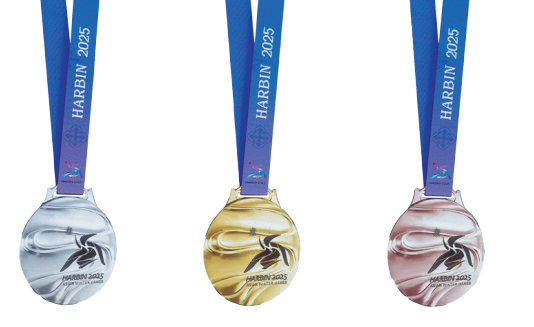
The design on the front of the medals combines the streamlined shape of a racetrack with the emblem of the 9th Asian Winter Games. PROVIDED TO CHINA DAILY
Medals
The medals for the Asian Winter Games, titled "Spirit of Speed", signify an event brimming with energy, showcasing the fervor and zeal for winter sports alongside the unity and friendship among Asian countries.
The design on the front of the medals combines the streamlined shape of a racetrack with the emblem of the 9th Asian Winter Games, capturing the powerful and graceful motion of athletes in action. This design embodies the strength and beauty of competitive sports. The flowing curves of the racetrack incorporate the silhouette of the Harbin Grand Theatre, reflecting the city's unique aesthetic.
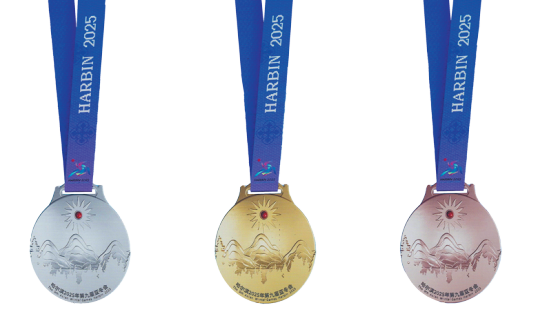
The back of the medal features landscapes of Yabuli. PROVIDED TO CHINA DAILY
The reverse side of the medal features a picturesque landscape of Yabuli, with mountain ranges and forests that mirror the terrain of the Greater and Lesser Hinggan Mountains, creating a vibrant portrayal of Heilongjiang's rich and bountiful landscape.
At the center, the emblem of the Olympic Council of Asia is embedded with a rare Xunke red agate from Heilongjiang — symbolizing the sun shining brightly over the vibrant land.
"Xunke red agate boasts high transparency, a soft and lustrous sheen, and a smooth surface. These unique qualities can enhance the medals with a distinctive visual effect and aesthetic appeal," said Zou Cunliang, the medals' chief designer.
It is also a locally sourced gem from Heilongjiang province. By incorporating it into the design of the medals, it can fully embody the regional cultural characteristics of the host, attracting people from various parts of Asia to better understand the cultural heritage of Heilongjiang, he added.
The ribbon clasp at the top of the medals is inspired by the Sun Gate of Sun Island scenic area in Harbin, another feature that embraces the characteristics of the host city.
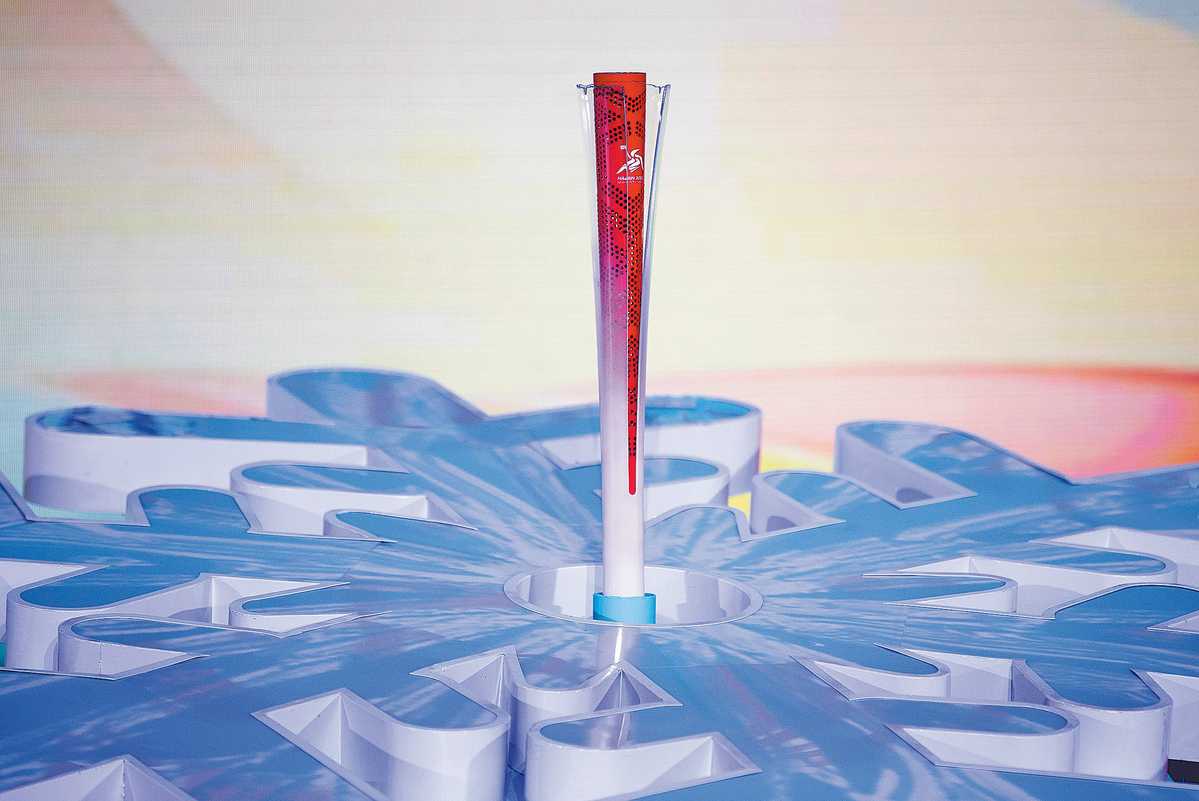
The Games' torch takes the form of a blossoming lilac — the city flower of Harbin — and is further inspired by the Heilongjiang River. PROVIDED TO CHINA DAILY
Torch
The Games' torch, which takes the form of a blossoming lilac, stands at a height of 735 millimeters, with a diameter at the crown of 115 mm and a grip diameter of 50 mm.
It features colors such as China red, lilac purple and snow white. The outer edge of the torch's combustion chamber is adorned with a cutout snowflake pattern.
When ignited, the torch presents a harmonious blend of ice and fire, highlighting the brilliance and passion of winter sports.
The torch design is further inspired by the Heilongjiang River that flows through its namesake province.
Zhang Junhai, the designer of the torch, and an industrial design teacher from Beijing University of Science and Technology, explained: "I designed the entire torch around the concept of the surging power of water, in a majestic and powerful manner. Therefore, the torch's shape grows upwards from the bottom."
The design theme — "surging" — aims to embody the lively and dynamic energy of nature, symbolizing the vibrancy and passion of the 9th Asian Winter Games.
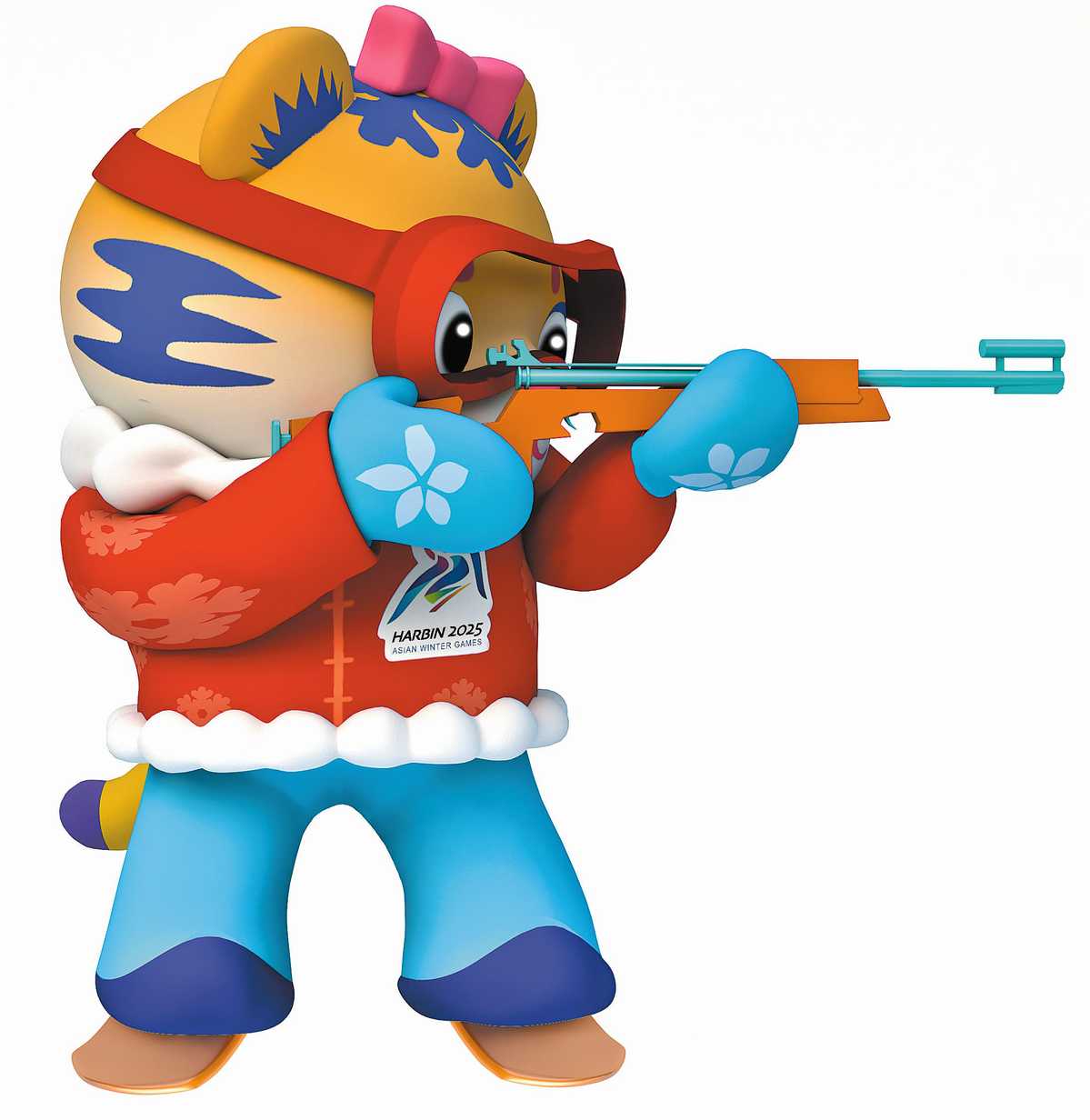
Games mascot Nini represents the snow events, and wears traditional Chinese clothes. PROVIDED TO CHINA DAILY
Emblem
The emblem, titled "Breakthrough", combines elements of a short-track speed skater's sprinting posture, a lilac and the glowing red sun of the Olympic Council of Asia, blending Chinese culture with Olympic elements. It conveys China's pursuit in the new era of accelerating the development of a strong sporting nation, and tirelessly striving for higher, faster and stronger goals, contributing to the development of winter sports in Asia.
With a gradient of blue and purple hues, the emblem captures the iridescent play of light on ice, symbolizing the enchantment of winter sports. The purple gradient in the ribbon, again draws from the lilac.
The emblem's design is reminiscent of the Chinese character for "nine" — jiu — a number signifying prestige and authority in Chinese culture. The pattern seeks to reflect Harbin's profound respect for other Asian countries.
Furthermore, the emblem's outer contours form a calligraphic Chinese character he, which translates to "combination", symbolizing the Chinese people's aspiration to gather with friends from across Asia, foster unity, collaborate and progress together.
Contact the writer at xinwen@chinadaily.com.cn